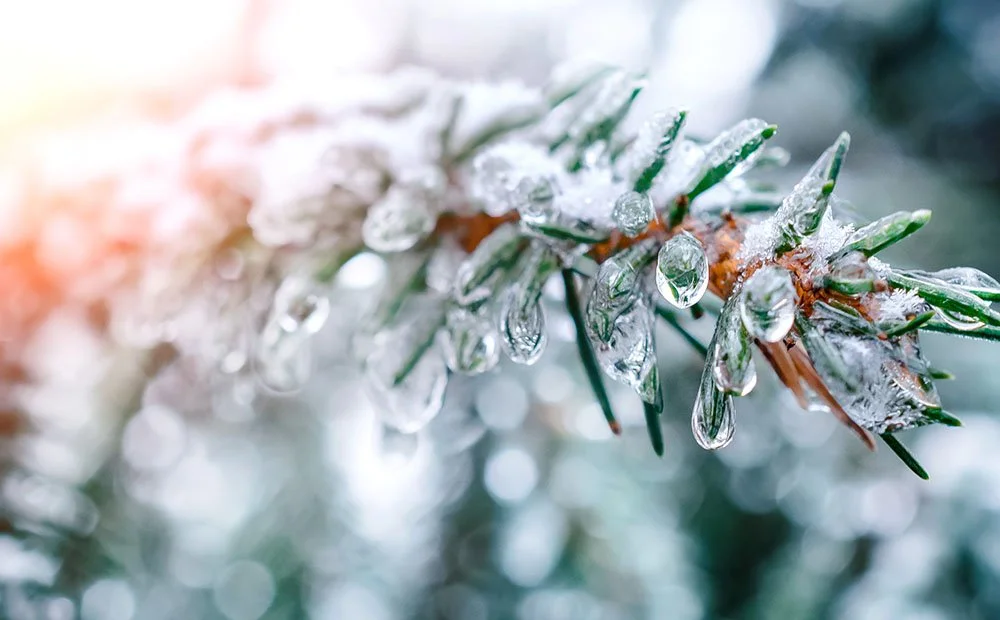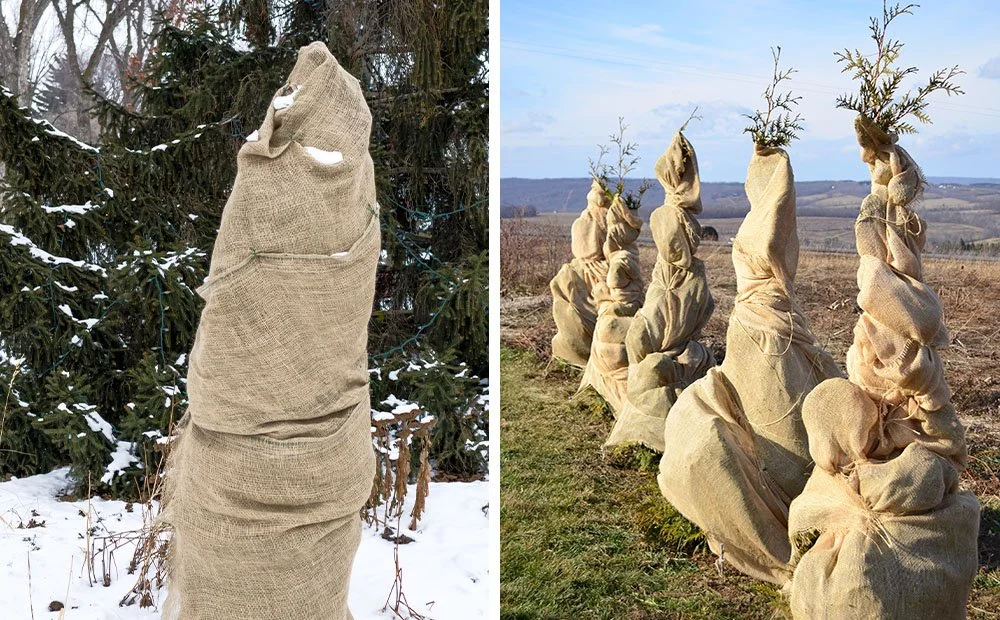HOW TO PROTECT YOUR TREES FROM WINTER BURN AND SALT DAMAGE
Have you ever noticed your evergreens have brown branches in the spring? It's likely winter burn! This is a common problem of evergreens grown in cold and windy conditions. Plants that are marginally hardy or that are not adapted to local winter conditions are more likely to suffer from winter burn. The effects of winter burn can be so severe that the affected plants can die or need replacing, affecting a wide range of evergreens, including:
Broadleaf evergreens: boxwood, holly, rhododendron
Needle evergreens: fir, hemlock, pine, spruce, yew
Evergreens with scale-like leaves: arborvitae, false cypress, juniper
However, preventing damage is relatively easy if you follow our key steps below.
How to Identify Winter Burn on Your Trees
As the snow melts and temperatures rise in spring, winter burn symptoms appear. Browning begins at the tips of branches and gradually progresses toward the plant's center, and the most affected foliage is typically on the tree's southern, southwest, and western sides. Essentially, the branches have become dehydrated from the winter air and not having enough water stores to push new growth in the spring. If you have any evergreens with brown edges on their branches, they've likely suffered winter burn in previous years!
How to Protect Evergreens in the Winter
To protect your trees from the cold, follow these steps:
Use Mulch
Mulch goes a long way in protecting all of your garden plants from the cold, including your evergreen trees. In addition to insulating roots from extreme changes in soil temperature, mulch reduces water loss and provides nutrients to your tree as it decomposes. In the winter, it also prevents heaving, which happens when the ground freezes and thaws repeatedly and pushes your tree up from the soil. Avoid mulching trees and shrubs at their bases by at least three inches; mulching against the trunks will provide a habitat for winter pests which will not be ideal for your tree! Use loose organic matter like hardwood pine, bark, cedar, and more.
Wrap Your Trees
You can easily protect trees and shrubs from the cold by covering and wrapping them in fabric. It is common to use burlap tied with twine, but you can also buy special thermal tree wraps designed to last all year through the rain, snow, salt, and wind. Of course, burlap is the simplest solution and does the job just fine.
Refrain from Applying Fall Fertilizer
In the late summer or fall, fast-acting, high-nitrogen fertilizers can potentially trigger the development of new foliage and interfere with the proper dormancy onset; this can damage your tree's natural growth cycle. You wouldn't want to drink a cup of coffee before bed, and neither do your trees!
During Late Summer and Fall, Do Not Prune
Non-native evergreens pruned late in the season may have an overabundance of new growth. The problem is that this new growth will need more time to develop before winter; therefore, you should not prune your evergreen trees during the late summer or early fall.
Water Until the Freeze
Watering until the ground freezes is essential to maintain your evergreens' water supply. Even though it's cooling down in the fall, your evergreens are working hard to bolster their energy supplies so that they can take a good nap over the winter and then have a strong growth spurt in the spring. Ensuring that they have enough water not only prevents winter burn but will also set up your evergreens for a great spring.
How to Prevent Salt Damage
When plants are exposed to salt, they cannot absorb their nutrients properly. To prevent salt damage from harming your trees:
Consider salt-tolerant species, like Rocky Mountain Juniper and Sea Buckthorn; plants that aren't as cold-hardy are more likely to suffer salt damage.
Reduce the amount of salt damage to trees and shrubs by planting new trees further away from roads. Be aware of each tree variety, its habitat, and its necessary growth requirements.
Rinse the salt off your trees in spring to reduce damage from sprayed branches. Likewise, water the ground thoroughly to push any salt that's on your lawn or around your tree through the soil so that your tree doesn't absorb it.
For more information on Indianapolis winter tree protection, visit us at Dammann's Garden Company today! We're happy to help you protect your trees and ensure they'll have a happy winter-to-spring transition.





